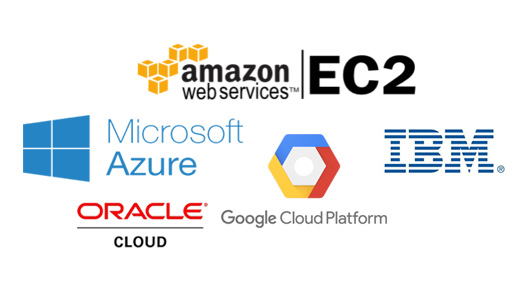How to Better Manage Your Public Cloud Environment

In our ever changing work environments technology is a constant influence. Across the board cloud computing is still one of the hot topics in technology today. Implementing a public cloud environment for your business processes can provide many advantages. However, the benefits can be limited by how your cloud environment is managed.
Background
Successful public cloud management begins within IT. Two basic components for IT staff are IT environment elements and IT management. They are essential to providing the foundation that cloud management will be built upon.
IT Environment Elements are the devices and their required application for your business to run on the cloud. They are made up of infrastructure and software platforms. Servers, computers, network, and storage compose infrastructure. While software platforms consist of virtualization, databases, and servers (i.e. web, application, and file). Infrastructure and software platforms are the backbone pieces for streamlining cloud environment management because they provide the physical connection for your data.
IT Management of these elements is accomplished in three tasks: provisioning, monitoring, and adopting. Provisioning can occur at implementation, as an expansion or upgrade, or as simply maintaining the current system. Monitoring keeps IT one step ahead and ensures smooth operations of both internal and external facing assets. It helps with checks and balances to maintain control. Adopting is evolving with the latest demands and trends from internal needs as well as the external needs of clients or customers.
Public Cloud Management
Definition
The public cloud, briefly defined, is when applications and storage are made available to the general public over the internet by a service provider. The characteristics of the public cloud are:
- All needed IT resources are provided as services. For example infrastructure, software and software platforms are maintained by the provider.
- The service provider has the flexibility to consume these resources as is and to mix and match to provide their own services.
- Each provider has an individual process and procedures to provision and monitor resources. The majority possess great support for automating each activity involved in provisioning and monitoring data in the cloud.
- All resources are physically operated with a high degree of availability by different SLA’s (service level agreements).
- All services available on the public cloud may be free or offered on a pay-per-usage model.
These are the current leading cloud providers: Amazon Elastic Compute Cloud (EC2 or commonly termed as AWS), IBM’s Blue Cloud, Oracle Cloud, Google AppEngine and Microsoft Azure Services.
Factors
Choosing a provider should be influenced by your business objectives and how they best match what a public cloud provider offers in terms of requirements. Key factors to keep in mind while selecting ANY cloud provider are:
- Security and Compliances – To maintain data (Internal and Customer or Client)
- Responsiveness – Turn-around time for any change
- Access and Availability – Ease of access and geographic locations
- Stability and Ease of Use – How to make existing process and procedures better and more reliable
- Cost Analysis – You Must Have One Completed
After considering these factors a business must look within to ensure the best option is chosen. Securing the best option enables ease of management and greater benefits. Two questions that every business should investigate and answer are, “What are the current pain points in my business?” and “Can a public cloud solution solve or minimize them?”
Look to these areas to answer those questions.
- Costs – How does public cloud usage reduce running costs? i.e.: CapEx and OpEx
- Support – Does the public cloud provider have availability CLOSER to Your Customers?
- Management – How will these specific management aspects be affected?
- Virtual Machines (VM)
- VM migration to public cloud
- Flexibility and support of customizing OS images
- Support for VM templates
- Auto Scaling (CPU, Memory)
- Network Connectivity
- Storage Choices
- Virtual Machines (VM)
Considerations
Requirements and cost concerns are big influencers when choosing a provider. Each business should carefully study the predictability of cost structures and their implications. Technical factors like VM migration, storage, and auto scaling should also be considered.
The public cloud can provide several enterprise benefits. The decision of which provider will inevitably determine how you manage your public cloud environment.
Management
It is important that every startup and established vendor have a tool for managing cloud computing environments. Tools can guide provision, monitor or perform both. Sometimes cloud providers make these tools available to their users. Other times a third party is needed to deliver a solution. It is important to be aware of vaporware and to take the time to sort through the aspect of managing the whole implementation. For example: If your cloud deployment is fairly static or not mission-critical, then you may not need a dynamic provisioning system. In that case, it is sufficient to use the tools that come along with the product for resource additions and updates.
Some examples of public cloud provider products/services to manage cloud environments are: VMware, OpenQRM, CloudKick, and Managed Methods. Integration with software from big players like BMC, HP, IBM Tivoli, and CA is an additional benefit because they alert, red flag, and track performance trends in case of sudden problems.
Conclusion
To achieve the best management of your public cloud environments you should:
- Pay close attention to your business goals and requirements to select the right provider.
- Don’t let the amount of services like SaaS, PaaS, and IaaS overwhelm your task.
- Make a list of pros and cons of the public cloud to help achieve your goal.
PaperTracer CASO, Rajashree Varma presented “Managing Your Public Cloud Environments” at the Seattle Technology Leadership Conference on March 29, 2017. She and a panel of experts developed on the best practices for maintaining a public cloud environment. To learn more you can visit The Seattle Technology Leadership Conference.
